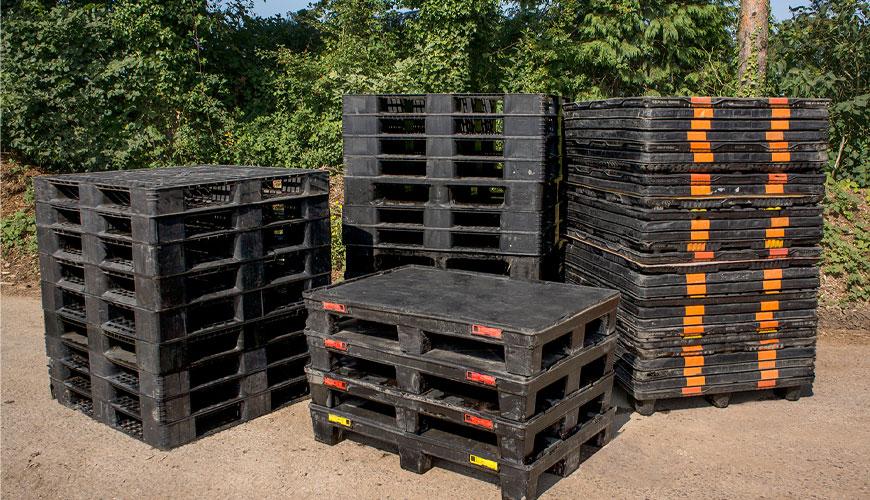

Developed by the International Organization for Standardization (ISO), the ISO 8611 standard specifies testing methods for existing and prototype flat pallets for material handling (for any use). Specific tests to determine load capacity do not replace the value of performing field tests on specific pallet designs.

ISO 8611 defined a sequential testing system based on a pallet that passed each test in a series. This meant that a pallet could be close to failure in a given test where another pallet might have been massively overdesigned. (Previous) deviation
Using the criteria of safety, both pallets were presented equally in terms of safety factor. A notched beam pallet was a good example of this, where it is typically very rigid but often close to breaking point in the (legacy) bending test. The new, three-part version of ISO 8611 corrects the failure of each sample to establish a precise factor of safety. Hardness is treated as a discrete set of measurements taken during testing.
Running tests requires experience in testing (including payload), as well as some expertise with the materials being tested. In conjunction with ISO 8611-2 and ISO 8611-3, ISO 8611 is expressly designed to cover all pallet materials when used alone or in composites. Another change according to ISO 8611 is that it now covers all pallets for material handling, not just high-quality transit, change or pool pallets.
This part of ISO 8611 cannot be used to evaluate a pallet against ISO normative requirements without additional application of ISO 8611-2 and ISO 8611-3.
ISO 8611 Test Procedure
Test one pallet along the length of the pallet and then a second pallet across the width of the pallet to determine the weakest pallet support size. No further testing of the stronger dimension is necessary unless the result is within 15% of the weaker.
Once this is created, place a new pallet along its weakest side on pallet supports with the upper deck on top, centerlines 75mm from the outer edges of the pallet. Load applicators should be positioned at 0,25 L1 or 0,25 L2 when measured as shown; where L1 or L2 is the distance between the centerlines of the pallet supports.
Load applicators and supports will be flush with or protrude beyond the edges of the pallet. The edges will be loosened to a radius of 2mm ± 1mm. Where the load applicators overlap the gaps between the deck boards, padding pieces of equal thickness to the deck boards shall be used, each with an overall gap of 3mm to 6mm. Place the load applicators and load plate on the pallet platform, then apply the rest of the test load.
Among the services provided by our organization within the framework of material testing services, there are also ISO 8611 standard tests.
To get an appointment, to get more detailed information or to request an evaluation, you can ask us to fill in our form and reach you.